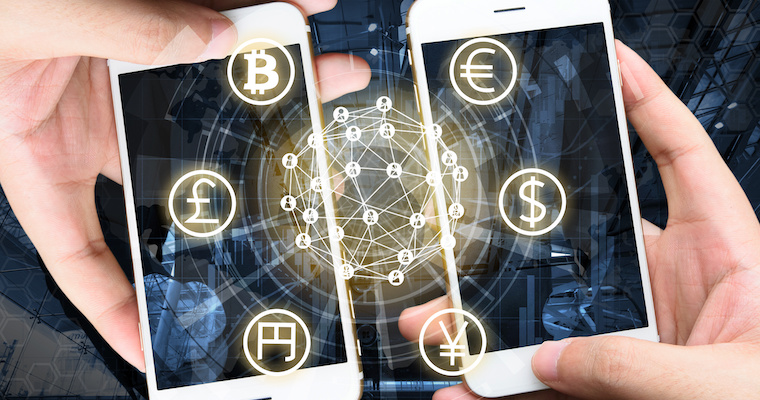When Can Fintech Do the Most Good?

Fintech is an increasingly important innovation for businesses across the world. Fintech broadly refers to technologies that enable banking and financial services. As fintech has the power to diffuse into a wide section of society, it is especially important for low and middle-income (LMI) countries. Many individuals in LMI countries, especially women, don’t enjoy the same access to banks as people in wealthier countries. Thus, a popular belief in technology circles is that fintech can replace traditional banks in LMI countries.
We examined this belief in our recent research published in Strategic Entrepreneurship Journal. We saw that fintech can undoubtedly make financial transactions less expensive and make managing money easier and less confusing. Yet we saw the best outcomes for the poorest individuals when they have access to both fintech and traditional banks. This is because marginalized individuals in LMI countries are often thwarted by social and institutional barriers, which banks have traditionally helped them overcome. It’s unclear whether fintech can accomplish this alone.
Our research examined the impact of mobile money in 74 LMI countries. Mobile money is a type of fintech that allows people to send and receive money using basic, low-cost phones. Some examples of mobile money include M-PESA in Kenya, bKash in Bangladesh, and PIM in Argentina. Unlike mobile banking or payment apps like Apple Pay, it is designed for the poor. Our research examined the role of mobile money in helping people in 74 LMI countries save for “microenterprises,” which are very small businesses or farms.
Mobile money and saving for microenterprises in low- and middle-income countries
For many people in LMI countries, microenterprises may provide a path out of poverty. However, poor people often can’t access the capital needed to start and grow microenterprises. One option is their own savings, but the poor face many obstacles that hinder their ability to save.
Previous studies, primarily using data from African countries, have suggested that mobile money can help the poor save more money and do more business. Mobile money reduces transaction costs and the cognitive challenges of saving for microenterprises. It can manage cash safely without the time and expense of traveling to a bank, and provide frequent updates to individuals about their finances. Therefore, one could argue that mobile money adoption could increase the likelihood of saving for microenterprises by the poor and by women in LMI countries.
But this is not the whole story. To realize the full potential of mobile money, we need to broaden our thinking about why marginalized individuals find it challenging to save. Economic and cognitive factors are certainly a big part, but so are social and institutional barriers.
The power of mobile money complemented by banks
Fintech alone cannot resolve all the barriers that discourage savings by the marginalized. Banks, as trusted institutions, also play an important role. For example, banks can enhance people’s legitimacy as business owners and provide security in financial transactions, two benefits that are are especially important for poor people and women in LMI countries. Thus, the effect of mobile money on saving for microenterprises by the poor and by women is likely to be stronger if they also have bank accounts. Our conversations with poor women microentrepreneurs from India and the Philippines verified this.
Furthermore, if the combination of mobile money and banks is more effective at addressing the barriers to saving for microenterprises, then the impact should be greatest for poor women, who face the most severe barriers. Our research examined this question.
Our investigation and findings
We analyzed data from the World Bank’s 2017 Global Findex, the most comprehensive data at the time of our research, for information pertaining to how adults around the world use financial products. This database provides details on individuals’ characteristics and reports whether they adopted mobile money and whether they saved money for a microenterprise, such as a business or a farm. Our sample included 81,345 men and women of all income levels from 74 LMI countries. About 15 percent of them used mobile money, and about 40 percent of those who used mobile money did not have a bank account.
We controlled for the effect of certain factors (such as country-specific differences, age, education, and employment in workforce). We also used recent methodological advances to stress-test our observed results and improve transparency. Here are our key findings:
- Mobile money adoption made it more likely that poor people would save for a microenterprise, compared to the non-poor. Thus, mobile money boosted the chances of saving for a microenterprise, especially for the poor.
- Women who used mobile money were more likely than men to save for a microenterprise, which suggested that mobile money adoption was especially helpful to poor women.
- However, the positive effects of mobile money for the poor and for women were only observed for banked individuals and not for the unbanked. This suggests that mobile money and banks work as important complements, particularly for the poor and for women.
- To dig deeper into intersectionality between poverty and gender, we examined how the effects of mobile money on saving for microenterprises varied for banked relative to unbanked individuals among all four categories of individuals—namely, poor and women, poor and men, not poor and women, and not poor and men. Our analysis revealed that the complementarity between mobile money and banks was strongest among poor women.
Implications and takeaways
Our research demonstrates the need to look more deeply at how technology and institutions can work together to solve grand societal challenges like poverty and gender inequalities in financing microenterprises. We saw that although mobile money is a promising fintech that can encourage savings by the poor, it may be less effective as a standalone technology. Mobile money can unleash its full potential when the poor also have access to bank accounts.
Policymakers and managers should understand that mobile money and bank accounts together create a powerful tool to foster growth at the base of the economic pyramid. When combined with bank accounts, mobile money can cut through existing social inequalities and help the poorest individuals save to start or grow small businesses and farms. Policymakers should work to help more people have access to traditional banks.
Our findings also have important takeaways for the fintech firms themselves. We suggest that they adopt an evolutionary rather than revolutionary mindset. Instead of seeking to replace a centralized financial ecosystem, we suggest that in settings of poverty, fintech firms should view their services as part of a country's larger, trusted financial ecosystem.
Overall, our research findings challenge the popular narrative that fintech can help marginalized individuals in LMI countries to leapfrog the lack of access to bank accounts. We caution against assuming that the potential of standalone fintech is unlimited. Indeed, we call for a deeper understanding of the conditions under which fintech and traditional banks can replace or complement each other. Fintech can be a transformative tool for solving grand challenges in society, but entrepreneurs need a nuanced understanding of its limits to fully unleash its power. We urge policymakers to continue promoting financial inclusion with formal banking. Strategic entrepreneurs who aim to tackle grand societal challenges can use digital technology to leverage the strengths of established institutions.
In short: fintech and banks are not substitutes, but complements, for the marginalized segments of society.
Explore the Research
Fintech and Banks as Complements in Microentrepreneurship, Strategic Entrepreneurship Journal, May 2023
EDITOR'S NOTE: This article was produced in partnership with Strategic Entrepreneurship Journal, a leading academic journal, as part of our effort to highlight actionable cutting-edge research on entrepreneurship. Click here to read other insights from SEJ.

Associate Professor / Strategy and Policy / National University of Singapore Business School
View Profile

Assistant Professor / Strategy, International Business, & Entrepreneurship / Nanyang Business School, Nanyang Technological University
View Profile





